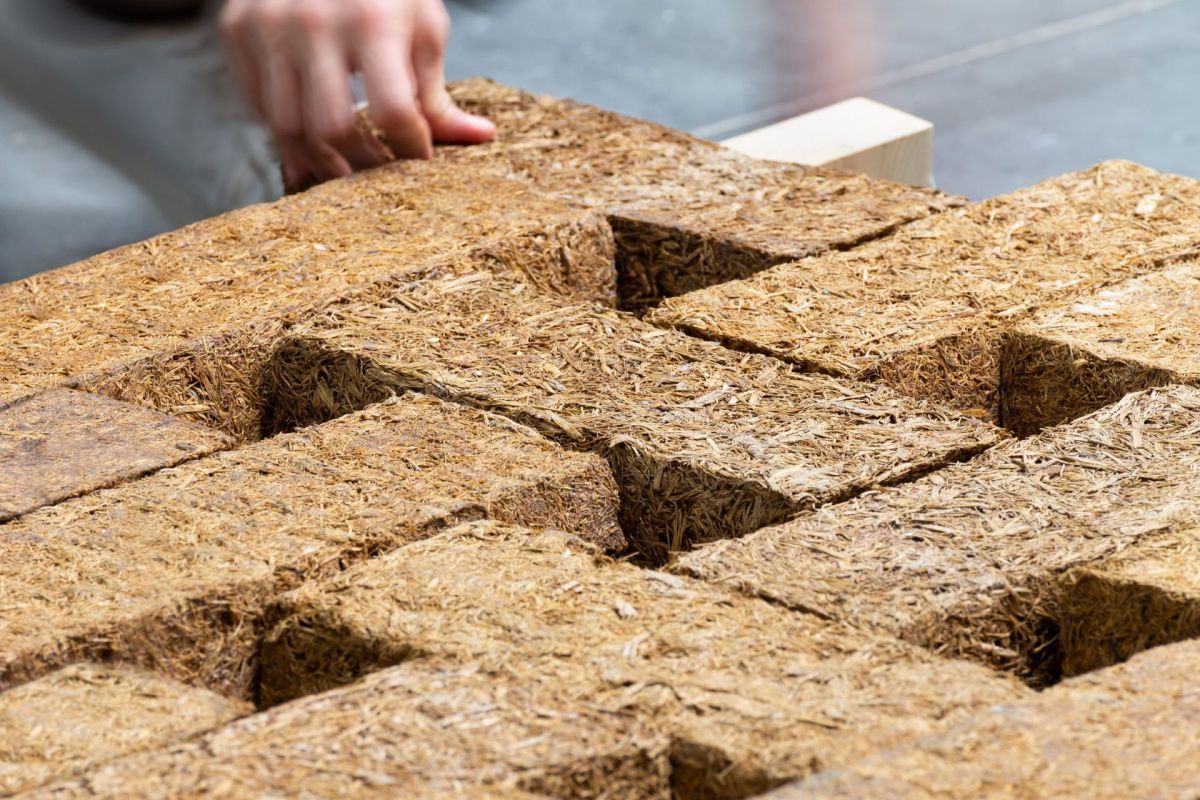Step aside, concrete. There's a sweet new construction hero in town, and it's made out of … sugarcane?
Architecture studio Grimshaw and the University of East London (UEL) joined together to create a brick made out of bagasse, a byproduct of sugarcane.
Known as Sugarcrete, this bio-building component can serve as a brick, an insulating panel, or a load-bearing element. Moreover, it was developed to be an environmentally friendly and affordable alternative to traditional bricks and concrete. (You can see a video of how they're made here.)
"Despite the global aim to hold global warming to 1.5 degrees Celsius [2.7 degrees Fahrenheit], it is estimated that our global built floor areas will double by 2060. Therefore, we must develop alternatives to current construction methods," UEL senior lecturer Armor Gutierrez Rivas told Construction Management.
The blocks are built using robotics and augmented reality technology. To make it easy to use them in multiple projects, they're extremely easy to assemble and disassemble.
"Challenging misconceptions of waste-based materials being inferior in structural strength, Sugarcrete can offer self-supporting structural applications beyond infill," the Sugarcrete team told Dezeen.
The cement industry is responsible for around 8% of carbon pollution, even considerably worse than the aviation industry. But Sugarcrete only creates 15-20% of the carbon footprint traditional bricks do — and its carbon footprint is 20 times lower than concrete while it's reportedly four to five times lighter.
Sugarcrete also reuses sugarcane waste.
According to the company, sugarcane is the world's most-produced crop by volume. By using bagasse to develop new building materials and other products that retain the fiber's sequestered carbon, sugarcane-producing companies can offset some of the crop's negative environmental impacts.
It's one of the many reasons that Sugarcrete has also been nominated for the year's Earthshot prize, which recognizes five categories of exceptional sustainability projects from around the world.
"The next steps of the research will see the development and co-design of digital tools linked to by-product availability from diverse crops and regions and performance criteria that maps the potential to deploy Sugarcrete globally," the Sugarcrete team told Dezeen.
Join our free newsletter for weekly updates on the coolest innovations improving our lives and saving our planet.









